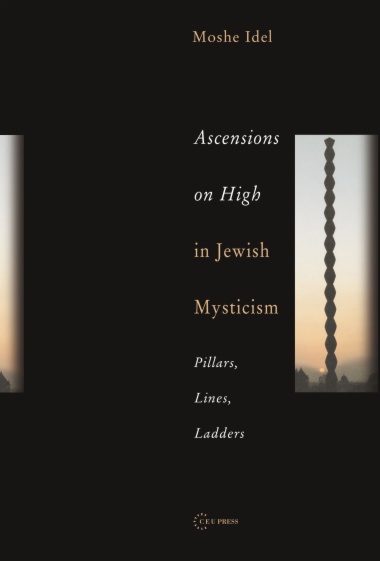Ascensions on high took many forms in Jewish mysticism and they permeated most of its history from its inception until Hasidism. The book surveys the various categories, with an emphasis on the architectural images of the ascent, like the resort to images of pillars, lines, and ladders. After surveying the variety of scholarly approaches to religion, the author also offers what he proposes as an eclectic approach, and a perspectivist one. The latter recommends to examine religious phenomena from a variety of perspectives. The author investigates the specific issue of the pillar in Jewish mysticism by comparing it to the archaic resort to pillars recurring in rural societies. Given the fact that the ascent of the soul and pillars constituted the concerns of two main Romanian scholars of religion, Ioan P. Culianu and Mircea Eliade, Idel resorts to their views, and in the Concluding Remarks analyzes the emergence of Eliade's vision of Judaism on the basis of neglected sources.
- Cover
- Title page
- Copyright page
- Table of Contents
- Preface
- Introduction
- 1. Studying Religion
- 2. Eight Approaches to Religion
- 3. Perspectivism: An Additional Approach
- 4. Kabbalah as Symbolic Theology according to Modern Scholarship
- Notes
- CHAPTER 1:On Diverse Forms of Living Ascent on High in JewishSources
- 1. Introduction
- 2. Heikhalot Literature: Precedents and Offshoots
- 3. Nousanodia: The Neoaristotelian Spiritualization of the Ascent
- 4. Neoplatonic Cases of Psychanodia
- 5. The Ascent through the Ten Sefirot
- 6. “As If” and Imaginary Ascents
- 7. Ascension and Angelization
- 8. Astral Psychanodia in Jewish Sources
- 9. Concluding Remarks
- Notes
- CHAPTER 2: On Cosmic Pillars in Jewish Sources
- 1. The Pillar in the Work of Mircea Eliade and Ioan P. Culianu
- 2. The Cosmic Pillar in Rabbinic Texts
- 3. The Pillar in the Book of Bahir
- 4. The Pillar in Early Kabbalah
- 5. The Pillar and Enoch-Metatron in Ashkenazi Esotericism
- 6. The Zohar and the Luminous Pillar
- 7. The Human Righteous as a Pillar in the Zohar
- Notes
- CHAPTER 3:The Eschatological Pillar of the Souls in Zoharic Literature
- 1. The Pillar and the Two Paradises
- 2. The Eschatological Inter-Paradisiacal Pillar
- 3. The Pillar in the Pseudo-Midrash Seder Gan `Eden and Its Zoharic Parallels
- 4.Worship of the Pillar
- 5. The Pillar as a Vehicle
- 6. The Pillar as Conductor to the Divine Realm
- 7. The Pillar and the Judgment
- 8. Contemplating a Supernal Secret
- 9. Later Repercussions of the Zoharic Stances
- 10. Pillar, Performance and the Righteous
- 11. The Timing of Posthumous Psychanodia
- 12. The Manichean Pillar of Light and Glory
- 13. Symbolic Interpretations of Zoharic Paradisiacal Architecture
- 14. Concluding Remarks
- Notes
- CHAPTER 4: Psychanodia and Metamorphoses of Pillars in Eighteenth-Century Hasidism
- 1. The Besht and the Epistle of the Ascent of the Soul
- 2. The Besht as an Iatromant
- 3. On Shamanism in the Carpathian Mountains
- 4. The Besht and the Eschatological Pillar
- 5. The Tzaddiq as the Present Pillar in Hasidism
- 6. Hasidic Semantics
- 7. Some Methodological Issues Related to the Besht’s Epistle
- Notes
- CHAPTER 5: The Neoplatonic Path for Dead Souls: Medieval Philosophy, Kabbalah and Renaissance
- 1. The Universal Soul and Median Line in Arabic Texts
- 2. The Median Line in Kabbalah
- 3. Al-Batalyawsi,Yohanan Alemanno and Pico dellaMirandola
- 4. The Ladder, Natura and Aurea Catena
- 5. Some Conclusions
- Notes
- Concluding Remarks
- 1. Pillars, Paradises and Gestalt-Coherence
- 2. Pillars and Some Semantic Observations
- 3. Between Literature and Experience
- 4. On the Pillar and Mircea Eliade’s Views on Judaism
- 5. Organism, Organization and the Spectrum between Them
- 6. Time, Ritual, Technique
- Notes
- Name Index
- Subject Index
-
Back cover

